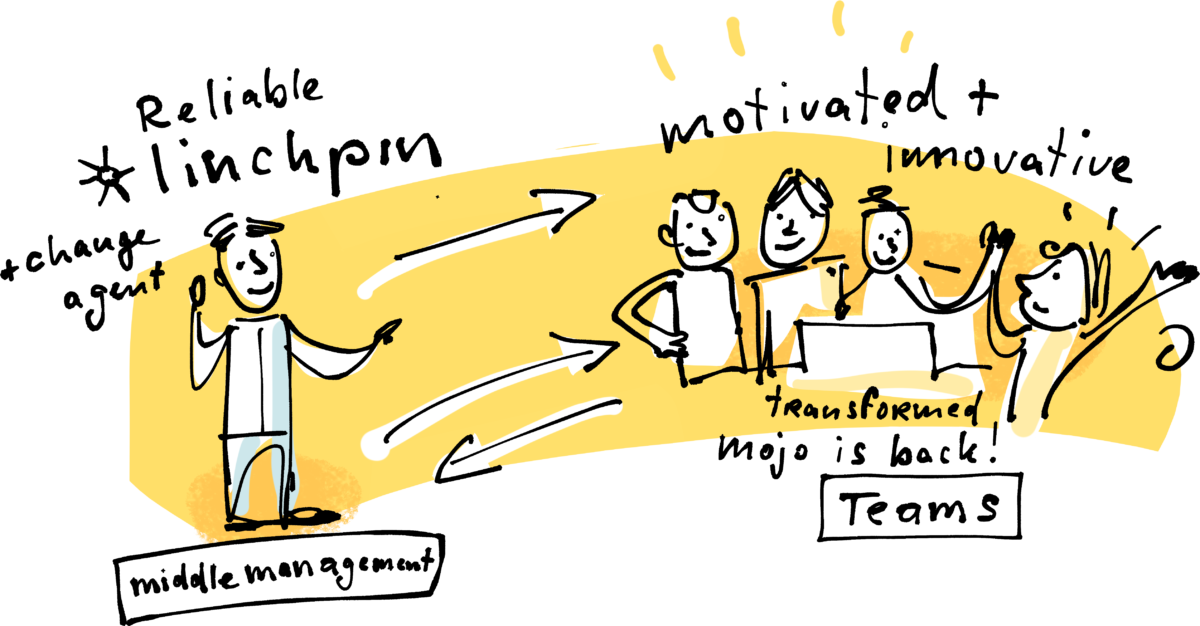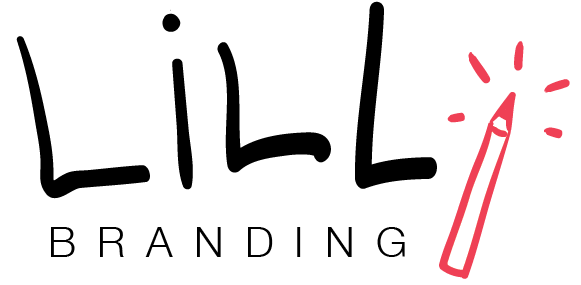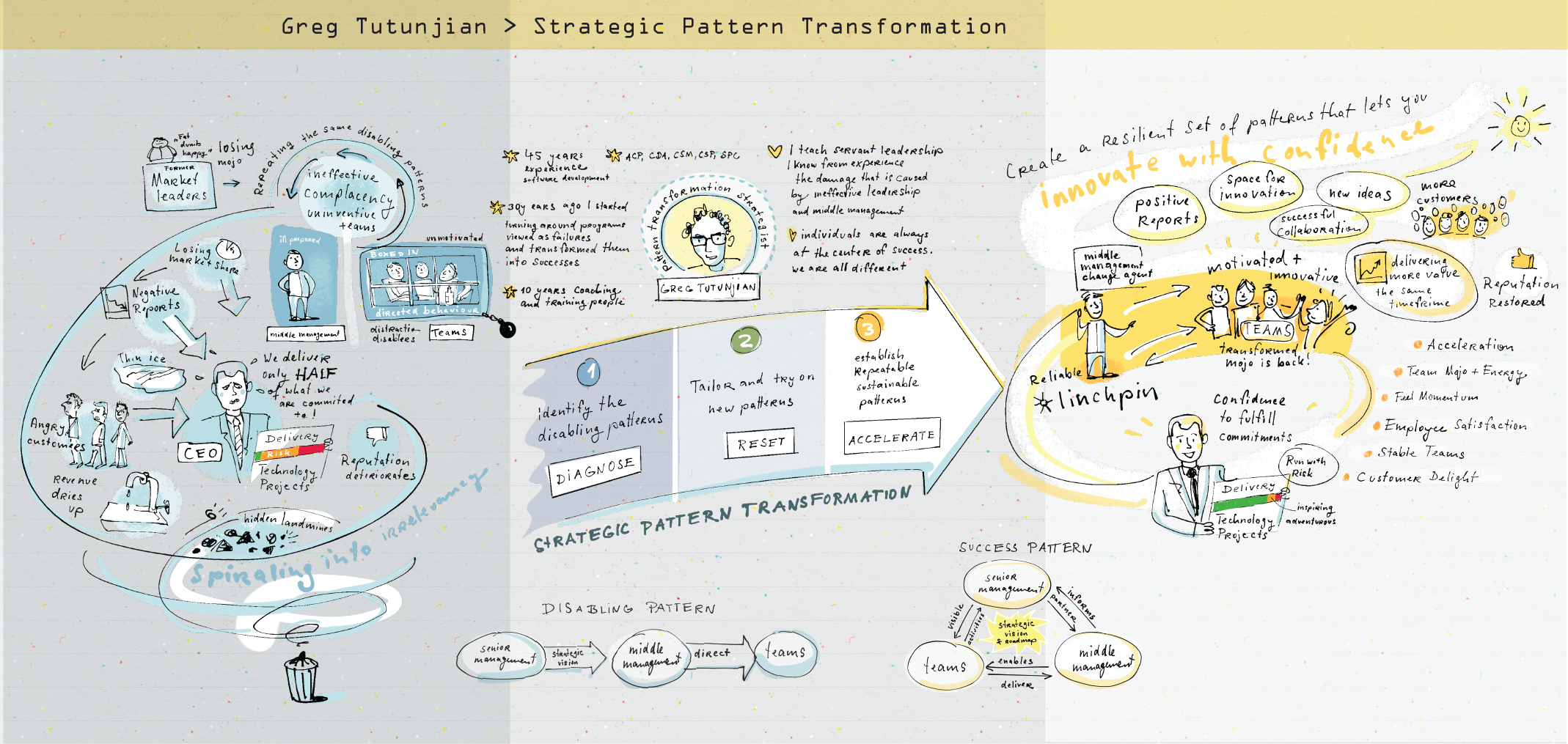Brand Storyboard: Agile Pattern Transformation

The challenge: To make invisible work stand out
Meet my client Gregory Tutunjian from Boston, Massachusettes. He is an experienced management and IT consultant with a whole tail of abbreviations in his Linkedin Profile. PMI-ACP, CDA, SPC5....
Greg contacted me because he was struggling to communicate what he is doing in his work. Here is what he wrote:
I am not happy with my website. I "appear" as many similar consultants, but I am not similar. I need to distinguish myself and separate myself from "the herd." Therefore I wish to communicate my intent, purpose, and ability confidently, in a very illustrative and engaging way.
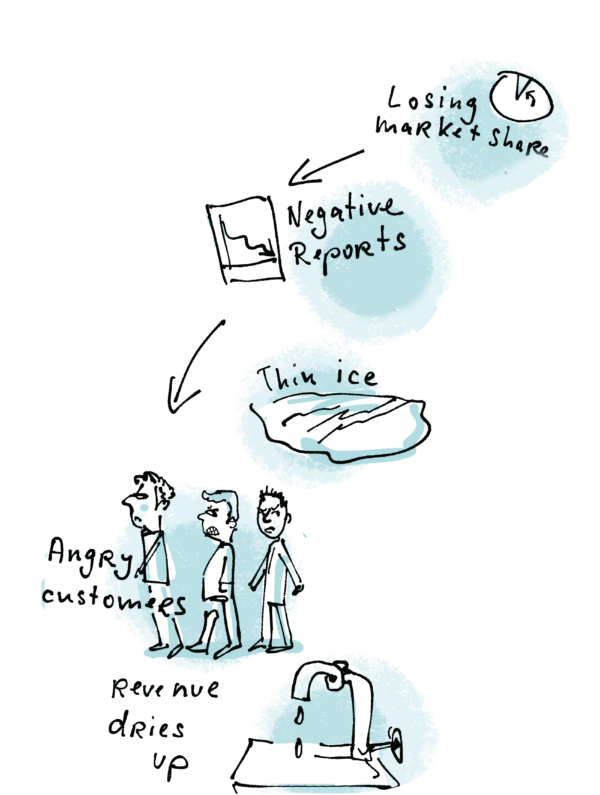
The problem for consultants like Greg is that their work is "invisible". You can show boring stock photos, or call the Lill pencil to the rescue! Greg explained to me in a long (3,5 hour) session how he works. It was fascinating. I found out that he detects patterns in organizations - mostly in the way that development teams, middle management, and senior management (fail to...) work together.
The Process: A self-revealing pattern
The Storyboarding process is a true co-creation. I draw what I hear, and my client gets immediate visual feedback on his thoughts. I move the elements around and tweak them until they look right.
It is fascinating also to me that during a session the process takes over, and forms a picture almost by itself. The result is a rather intricate image of Greg's fascinating work.
The visible result is a rather intricate image of Greg's fascinating work. The maybe more important effect for Greg is a clarity about what he is doing. The human brain seems to be wired for visual input. If we can SEE something it is easy to understand.
Having your thoughts and processes visually in front of you makes it easier to connect the dots and find the right words. In many of my storyboarding sessions, clients ended up with a new job title, or bought a new domain on the spot.
Implementation: From Storyboard to Linkedin-Profile
Greg walked out of his session with a different identity. He calls himself "Pattern Transformation Strategist", and "Pattern transformation" is the idea that all his branding will be pivoting around.
He described the session as "empowering", and that it allows him to see himself in a different light, and to tell a different story about what he is doing.
![]()
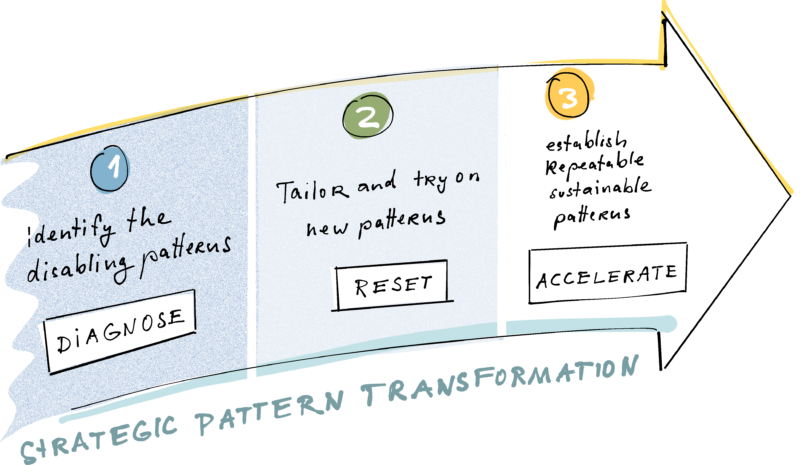
In the implementation session, we translated the image into a summary page for Greg's Linkedin Profile, and I extracted two pivotal diagrams – the "disabling" and the "success" pattern – for the header background image. We were able to pick all the keywords from the Storyboard. Visual branding: Because Greg is maneuvering the world of IT and coding, I chose a "nerdy" monotype font for the headline to counterbalance the sketches. The juxtaposition of these design elements – "human touch" with clean design and futuristic font –will also continue on Greg's future website.

Here are the friendly words that he used to describe the Storyboarding experience:
Ingrid is a natural partner, facilitator and change agent to elicit and capture one's message (even when it's a combination of messages.) Ingrid possesses the skills, insight, and experience to translate and transform what we're saying (thinking and mulling over) into illustrations (so quickly, fluidly and in relation to others) that capture all that and more. She is a joy to work with, and her results are affirming, inspirational, and directional towards more positive results for her clients. I am fortunate to be one of them!
If you want to know how to gain clarity with Brand Storyboarding , you can read more here, or schedule a friendly chat with me! I'm looking forward to hear more about you and your business.
